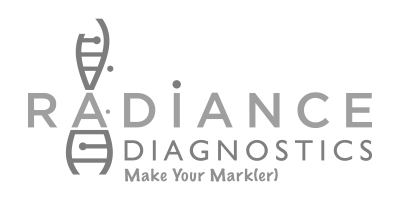Description
What is a Covid 19 RT-PCR test?
PCR tests
PCR (polymerase chain reaction) tests are a fast, highly accurate way to diagnose certain infectious diseases and genetic changes. The tests work by finding the DNA or RNA of a pathogen (disease-causing organism) or abnormal cells in a sample.
DNA is the genetic material that contains instructions and information for all living things.
RNA is another type of genetic material. It contains information that has been copied from DNA and is involved in making proteins.
Most viruses and other pathogens contain DNA or RNA.
Unlike many other tests, PCR tests can find evidence of disease in the earliest stages of infection. Other tests may miss early signs of disease because there aren’t enough viruses, bacteria, or other pathogens in the sample, or your body hasn’t had enough time to develop an antibody response. Antibodies are proteins made by your immune system to attack foreign substances, such as viruses and bacteria. PCR tests can detect disease when there is only a very small number of pathogens in your body.
During a PCR test, a small amount of genetic material in a sample is copied multiple times. The copying process is known as amplification. If there are pathogens in the sample, amplification will make them much easier to see.
Other names: polymerase chain reaction, rtPCR, reverse transcription PCR, qPCR, quantitative PCR, real-time PCR
A Covid 19 RT-PCR detects SARS CoV 2 viral genetic material by real-time PCR.
How are they used?
PCR tests are used to:
- Diagnose certain infectious diseases.
- Identify a genetic change that can cause disease.
- Find small amounts of cancer cells that might be missed in other types of tests.
How do they work?
PCR tests work by:
- Taking a sample of blood, saliva, mucus, or tissue
- The sample will contain your own DNA and possibly the DNA of a pathogen or cancer cell.
- The sample is put in a special machine. An enzyme called polymerase is added to the sample. This causes the sample to produce copies.
- The copying process is repeated multiple times. After about an hour, billions of copies are made. If a virus or pathogen is present, it will be indicated on the machine.
- Certain viruses, including COVID-19, are made up of RNA rather than DNA. For these viruses, the RNA must be changed into DNA before copying. This process is called reverse transcription PCR (rtPCR).
PCR and rtPCR check for the presence of a pathogen. Another type of PCR known as quantitative PCR (qPCR) measures the number of pathogens in the sample. qPCR can be done at the same time as PCR or rtPCR.
What happens during a PCR test?
There are different ways to get a sample for a PCR test. Common methods include blood tests and nasal swabs.
During a blood test, a healthcare professional will take a blood sample from a vein in your arm, using a small needle. After the needle is inserted, a small amount of blood will be collected into a test tube or vial. You may feel a little sting when the needle goes in or out. This usually takes less than five minutes.
A nasal swab may be taken from the front part of your nostrils (anterior nares). It also may be taken from the back of your nostrils, in a procedure known as a nasal mid-turbinate (NMT) swab, or from the nasopharynx, the uppermost part of your nose and throat. In some cases, a health care provider will ask you to do an anterior nares test or an NMT swab yourself.
During an anterior nares test, you will start by tilting your head back. Then you or the provider will:
- Gently insert a swab inside your nostril
- Rotate the swab and leave it in place for 10 to 15 seconds.
- Remove the swab and insert it into your second nostril.
- Swab the second nostril using the same technique.
- Remove the swab.
During an NMT swab, you will start by tilting your head back. Then you or your provider will:
- Gently insert a swab onto the bottom of the nostril, pushing it until you feel it stopping.
- Rotate the swab for 15 seconds.
- Remove the swab and insert it into your second nostril.
- Swab the second nostril using the same technique.
- Remove the swab.
During a nasopharyngeal swab:
- You will tip your head back.
- Your health care provider will insert a swab into your nostril until it reaches your nasopharynx (the upper part of your throat).
- Your provider will rotate the swab and remove it.
Do I need to do anything to prepare for this test?
You don’t need any special preparations for a PCR test.
Are there any risks to a PCR test?
There is minimal risk of having a blood test. You may have slight pain or bruising at the spot where the needle was put in, but most symptoms go away quickly.
A nasal swab may tickle your throat or cause you to cough. A nasopharyngeal swab may be uncomfortable and cause coughing or gagging. All these effects are temporary.
Is there anything else I need to know about PCR tests?
PCR tests are an accurate and reliable method for identifying many infectious diseases. And because they are often able to make diagnoses before symptoms of infection occur, PCR tests play a crucial role in preventing the spread of diseases.
Source: MedlinePlus, National Library of Medicine
MedlinePlus brings together authoritative health information from the National Library of Medicine (NLM), the National Institutes of Health (NIH), and other government agencies and health-related organizations.


